A Teardown of Huawei’s P30 Pro
Article By : Junko Yoshida
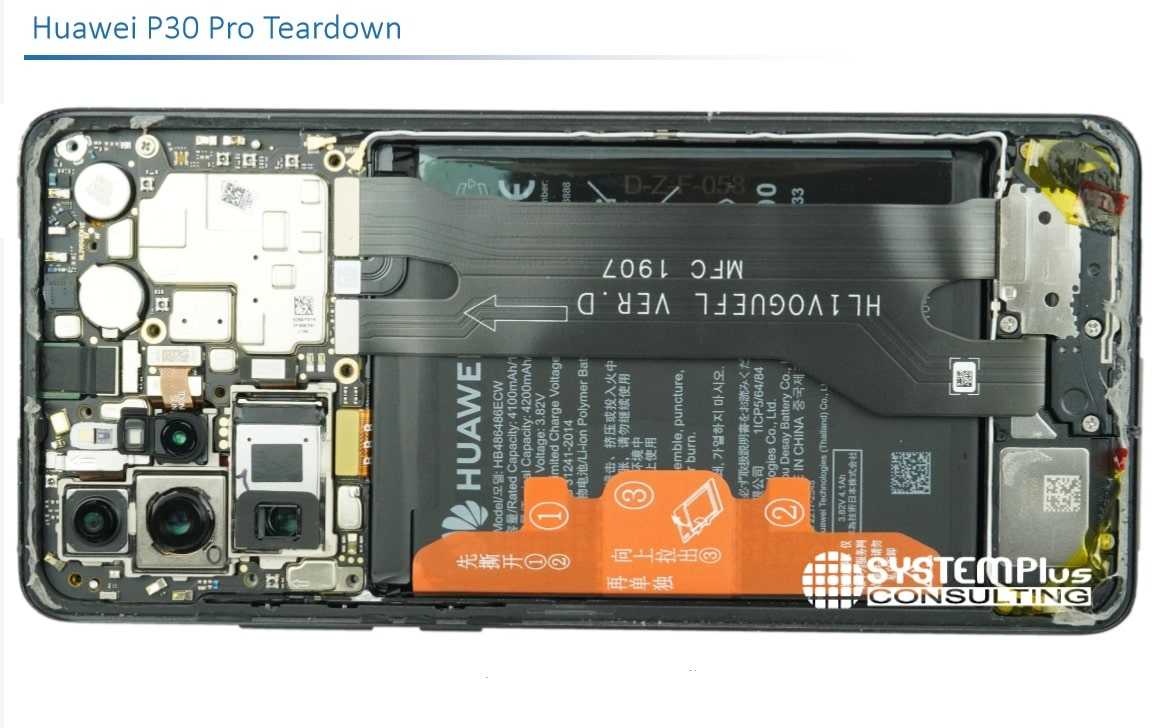
Huawei has launched in China its P30 and P30 Pro smartphones In a flash sale that was reportedly over in ten seconds. EE Times tapped System Plus Consulting and asked the analysts to reveal any surprises they encountered
In a flash sale that was reportedly over in ten seconds, Huawei today launched in China its brand new P30 and P30 Pro smartphones.
Along with the launch, different technology outfits scrambled to break apart the new handsets so that they could be the first to post teardown reports.

Stéphane Elisabeth, costing analyst expert at System Plus Consulting, told us that the focus of their P30 Pro teardown was squarely on quad cameras — including a periscope camera capable of 10X zoom. The periscope camera claims no loss in image quality, while the smartphone does not need to use a long-barrel telescopic lens.
But as the team dissected the P30 Pro, a few surprises popped up, Elisabeth told us.
3-stack PCB
First, Huawei is now using a 3-stack PCB configuration in P30 Pro. While Apple was the first smartphone vendor to do three-layer PCB in the iPhone X and Samsung followed suit, the System Plus crew didn’t expect Huawei to catch up so soon.
It turns out Huawei has used SLB (Substrate Like-PCB) assembly from Taiwan-based PCB supplier Unimicron. Apple’s iPhone X 3-stack PCB was assembled by Austria-based AT&S.
While both P30 Pro and iPhone X use similar PCB architecture in three layers, the way they use the stacks is different.
In the P30 Pro, the bottom layer embeds Huawei’s chip division HiSilicon-developed Kirin applications processor, power management ICs and passive. All RF components occupy the top layer. In between, a mid-frame PCB connects the two and serves as an isolation layer, Elisabeth explained.
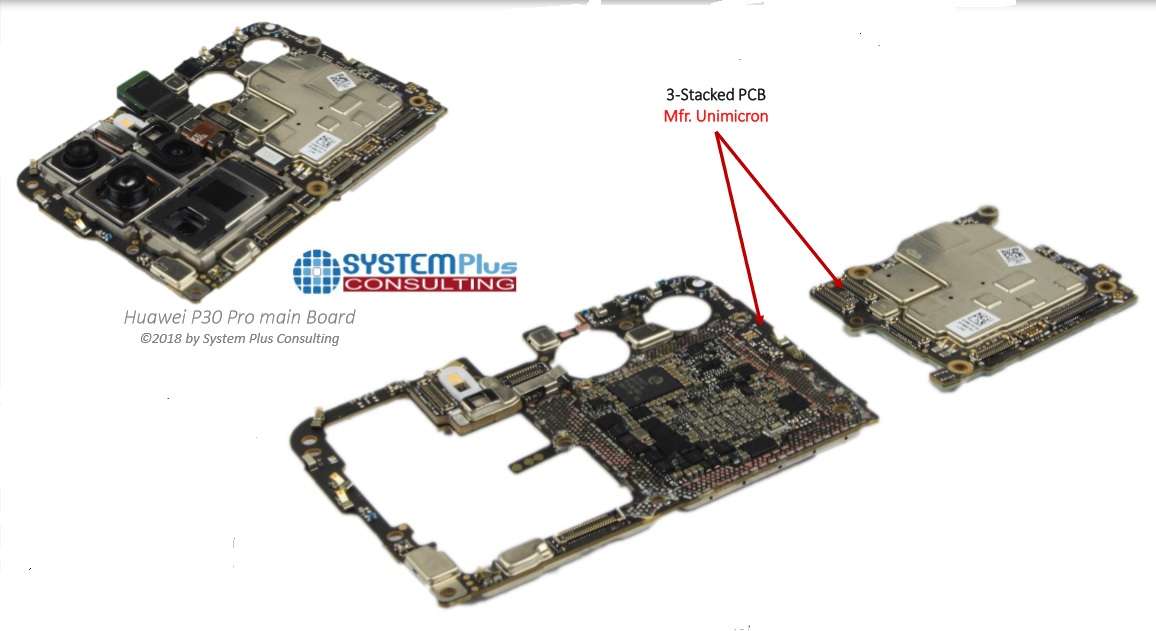
The advance of stacked PCB architecture is important, System Plus’ Elisabeth explained, because it enables the development of “a substrate-like PCB, with very thin copper lines.” The end results are “a powerful PCB with no loss in power and latency, while saving space,” he added.
Four cameras
Separating Huawei P30 Pro, more than anything else though, is its use of quad cameras. The new smartphone literally has four cameras. They include a main camera, plus cameras for wide-angle, Time-of-Flight and a periscope view. All four use Sony CMOS image sensors. “It’s a full design win for Sony,” said Elisabeth.
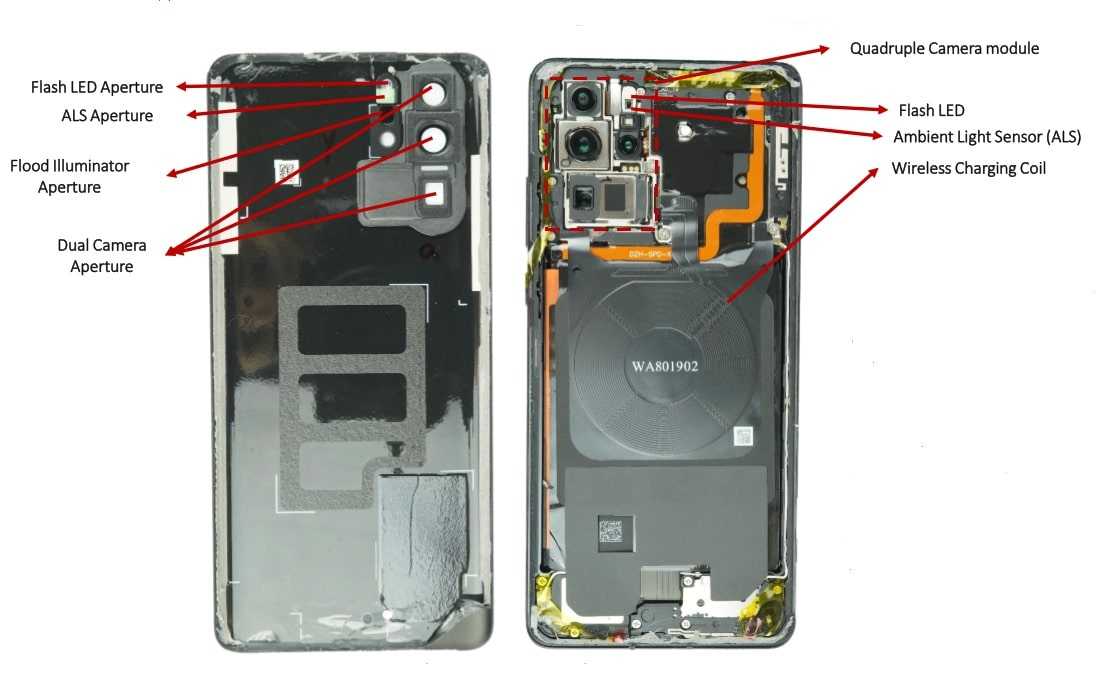
Another item to note with P30 Pro is the addition of a Sony Time-of-Flight (ToF) camera. While Huawei isn’t the first to use Sony’s ToF camera (China’s Oppo is already using it), Huawei uses it not only for Augmented Reality (AR) applications, but also for “auto focus,” Elisabeth noted.
By processing signals from all three cameras, the ToF camera helps map out a scene and allow a user to focus on a specific object. “This is the first time a ToF camera is being used for auto-focus,” Elisabeth stressed.
Periscope camera
Of all the units inside the P30 Pro, however, the biggest news is the periscope. Huawei placed a CMOS image sensor vertically and put a mirror angled at 45 degrees at the back to increase the optical path. This is the first time a 10x zoom – without any loss in quality — has gone inside an actual smartphone, according to Elisabeth. He noted that at Mobile World Congress in 2018, Oppo showed a prototype 5X zoom, but never launched an actual product.
Asked who put together a module for the periscope camera, Elisabeth said that System Plus believes Sunny Optical Technology in China did it by using IP from Corephotonics in Israel.
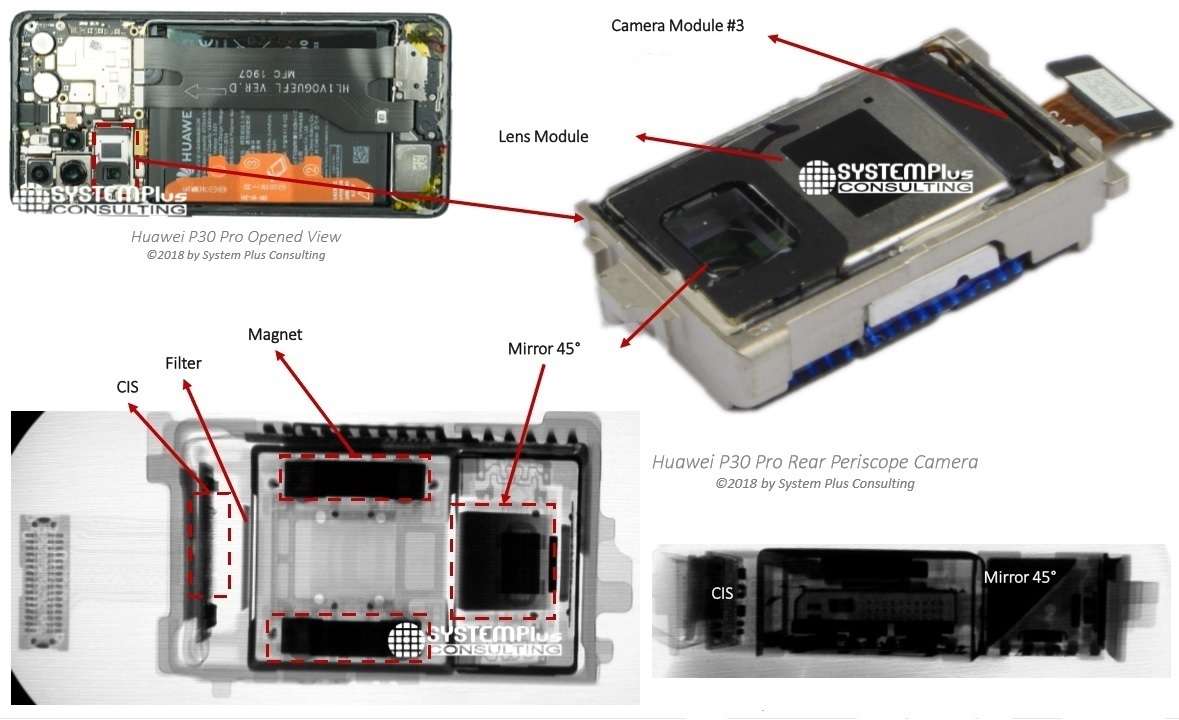
One additional System Plus discovery was that Skyworks no longer seems to be Huawei’s main RF supplier. P30 Pro uses Qorvo’s mid/high-band front-end module (QM77031). Skyworks now supplies only a low-band front-end module (SKY78191). Previously Skyworks provided three separate front-end modules to meet the needs of three different bands.
In the following pages, we will share the teardown done by System Plus, revealing who got design wins for which slots.
Huawei P30 Pro Front, Side and Back View
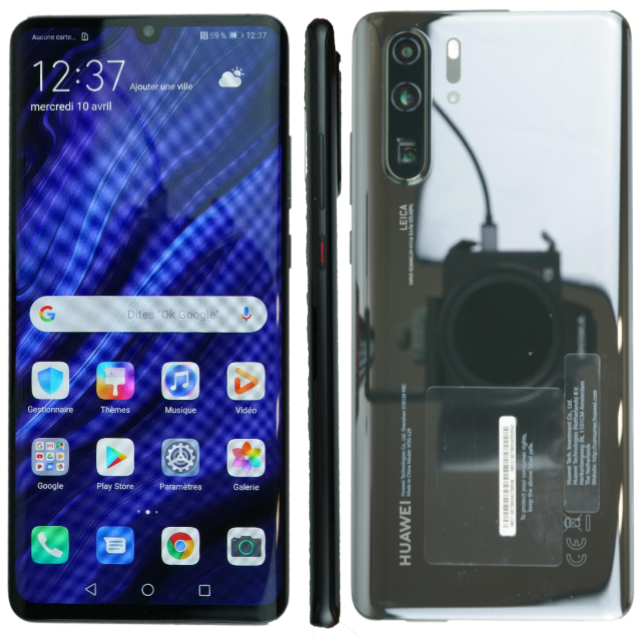
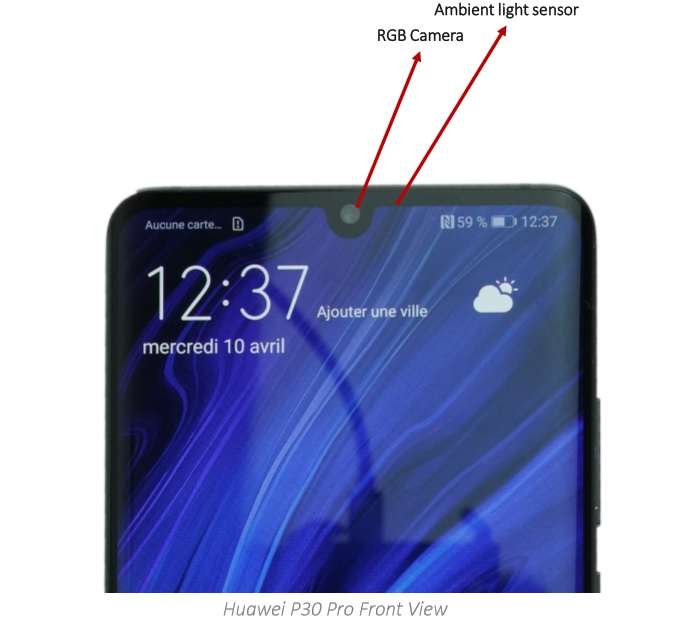
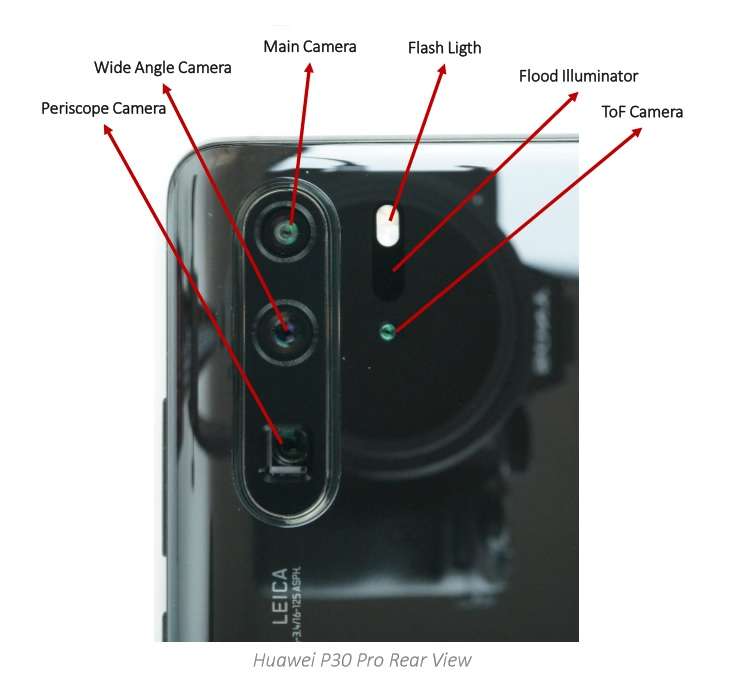
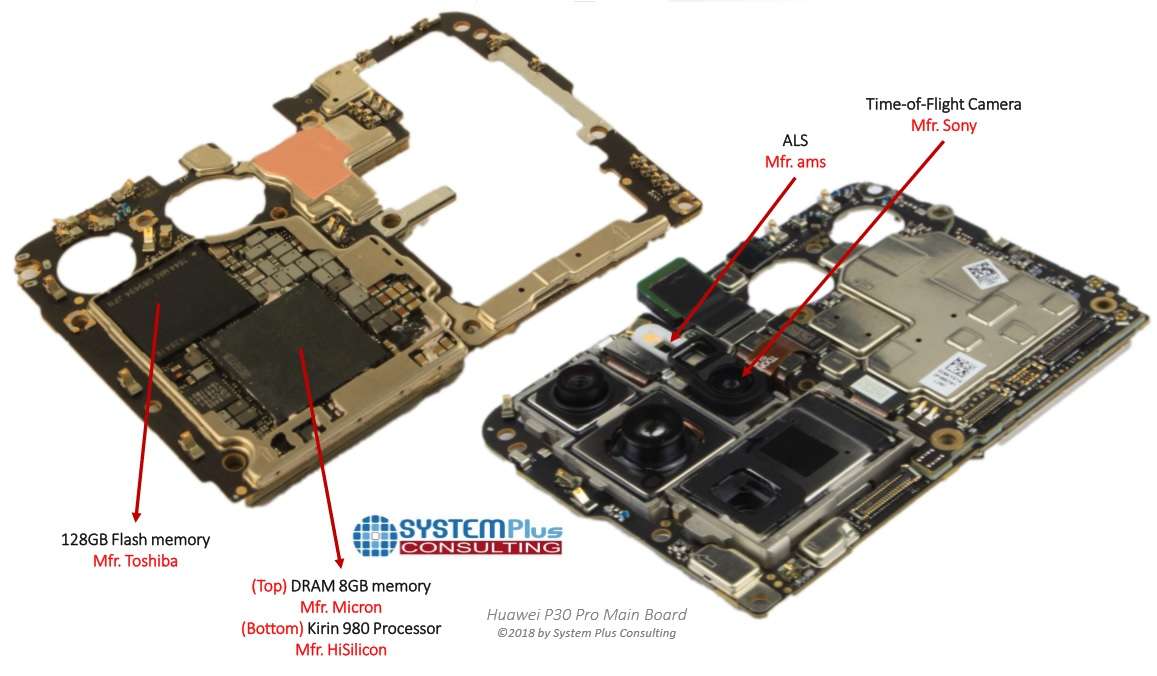
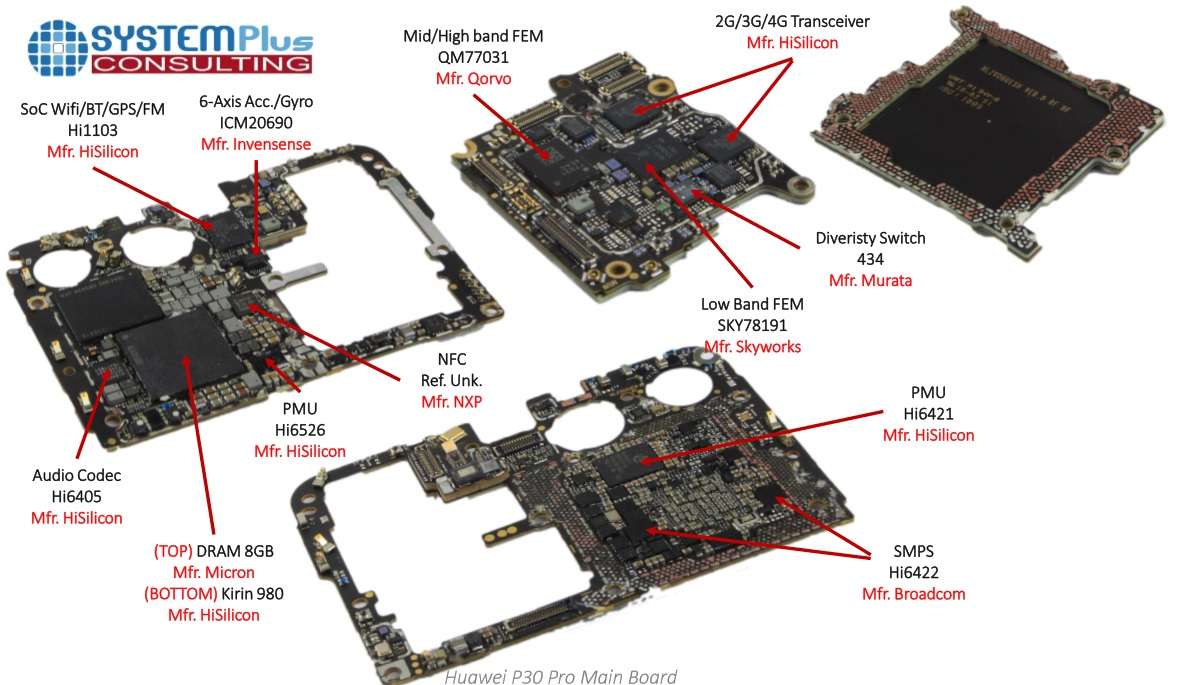
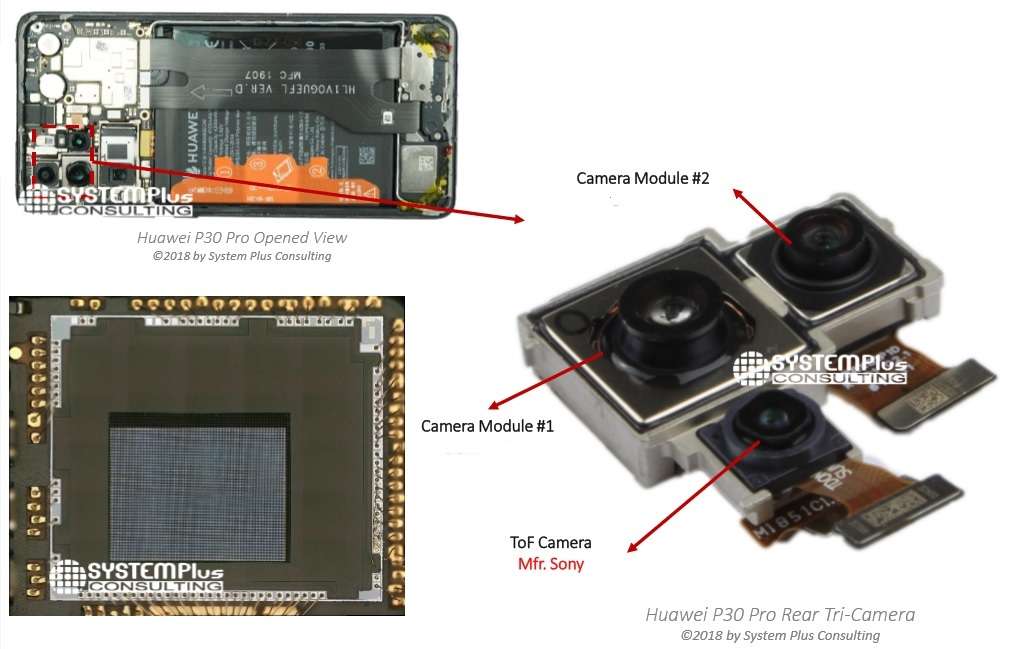
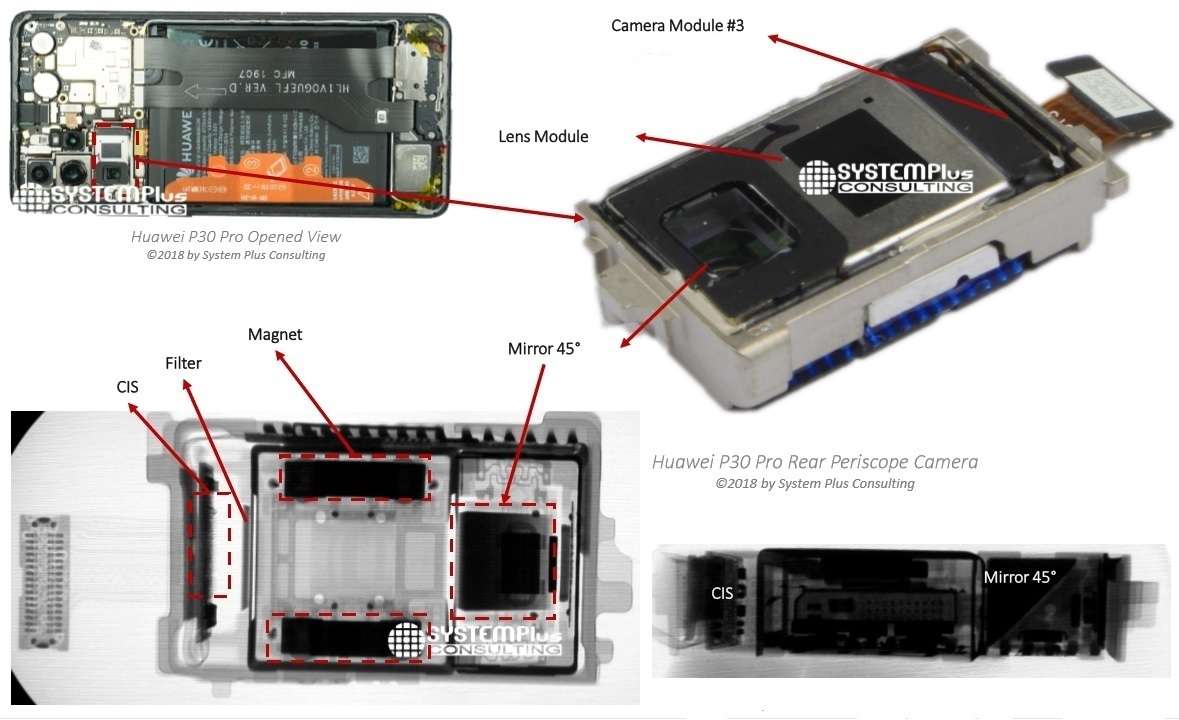
Subscribe to Newsletter
Test Qr code text s ss


